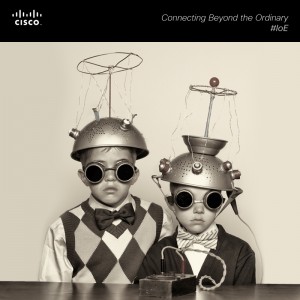A connected toothbrush that gives you a virtual checkup every time you brush – is that weird, or near-term reality?
I recently came across the article “25 Weirdest Things in the ‘Internet of Things’” in InfoWorld, which focuses on the different – and what many might consider unorthodox – ways in which the Internet is now playing a part in our everyday lives. The article outlines the many things that could someday be connected to the Internet, and the chain reaction that these connections(and their insights) will have.

As I said in one of my previous posts: a drop of water is a great metaphor for the Internet of Everything (IoE). Like a single drop of water, a single person, bit of data, or thing connected with billions of other people, data, and things can also shape the face of our planet. But, are these connected items all that strange? Or do we consider them weird only because we haven’t thought of them in the context of IoE?
Cisco recently explored how the connections created by connecting the previously unconnected will impact our daily lives. Not a day (or even an hour) goes by when I don’t look at an object and consider how it will connect to the Internet and provide us with information that can improve the world in which we live.
As the InfoWorld article noted, the possibilities are endless. Just look in front of you – what do you see that might someday be connected?
Shopping carts – What is your current grocery store routine? Most likely, it includes picking up your pantry staples and then making dashes across aisles to find the other items on your list. Imagine walking into a supermarket and synching your list with the shopping cart. By connecting your shopping list with both inventory as well as location data of other shoppers, the cart can lead you along the most efficient path, making sure you get what you need. And if the item you need is sold out, the cart’s connection to store inventory can even recommend an alternative. For more information on connected supermarkets, see Cisco IBSG’s retail white paper, “Catch ‘Em and Keep ‘Em.”
Mail – In the age of online bill payments and e-cards, snail mail has become theoretically obsolete; yet, most households still use traditional mail. By connecting pieces of mail with sensors in mailboxes and the Internet, we could track when important things arrive in our household mailboxes or PO boxes. Senders would know when mail has been delivered, and recipients could see what is in their mailboxes without physically having to check.
Smart grid – Imagine a world where electric vehicles dominate transportation. To ensure that enough power is supplied to vehicle charging stations during major events that attract large audiences, multiple devices must be connected, with the ability to communicate where to send that power. Take, for example, a concert or major sporting event where 50,000 cars pull into the venue or stadium parking lot and need to recharge during the event or before leaving. A smart grid can sense and even predict this influx of electric vehicles, and then redirect energy to support the increased load at the venue’s charging stations.
Just look around – what insights could you gain from the things around you if they were connected to the Internet?
Join the conversation
- #InternetofEverything
- #IoE
It is possible already
It is happening already
Dave, love the image. Thx for having a sense of humor in your blogs. Mary
Along with the other comments, thIs is happening now. We are working on how companies can monetize this and specifically on Smarter Cities. Whether its MQTT or Smarter Stadiums, a truly inter-connected life is all around us and I personally am really excited about.